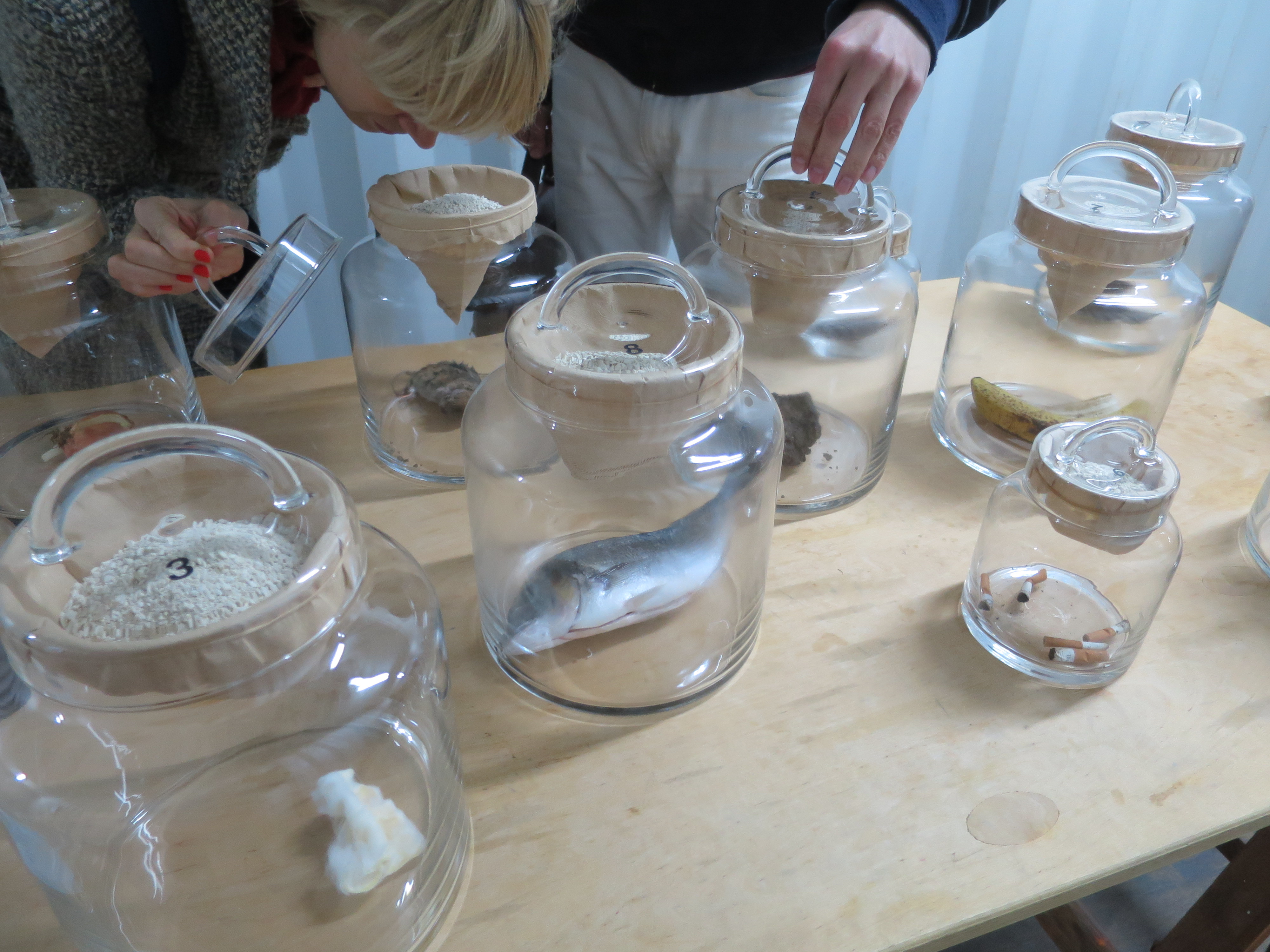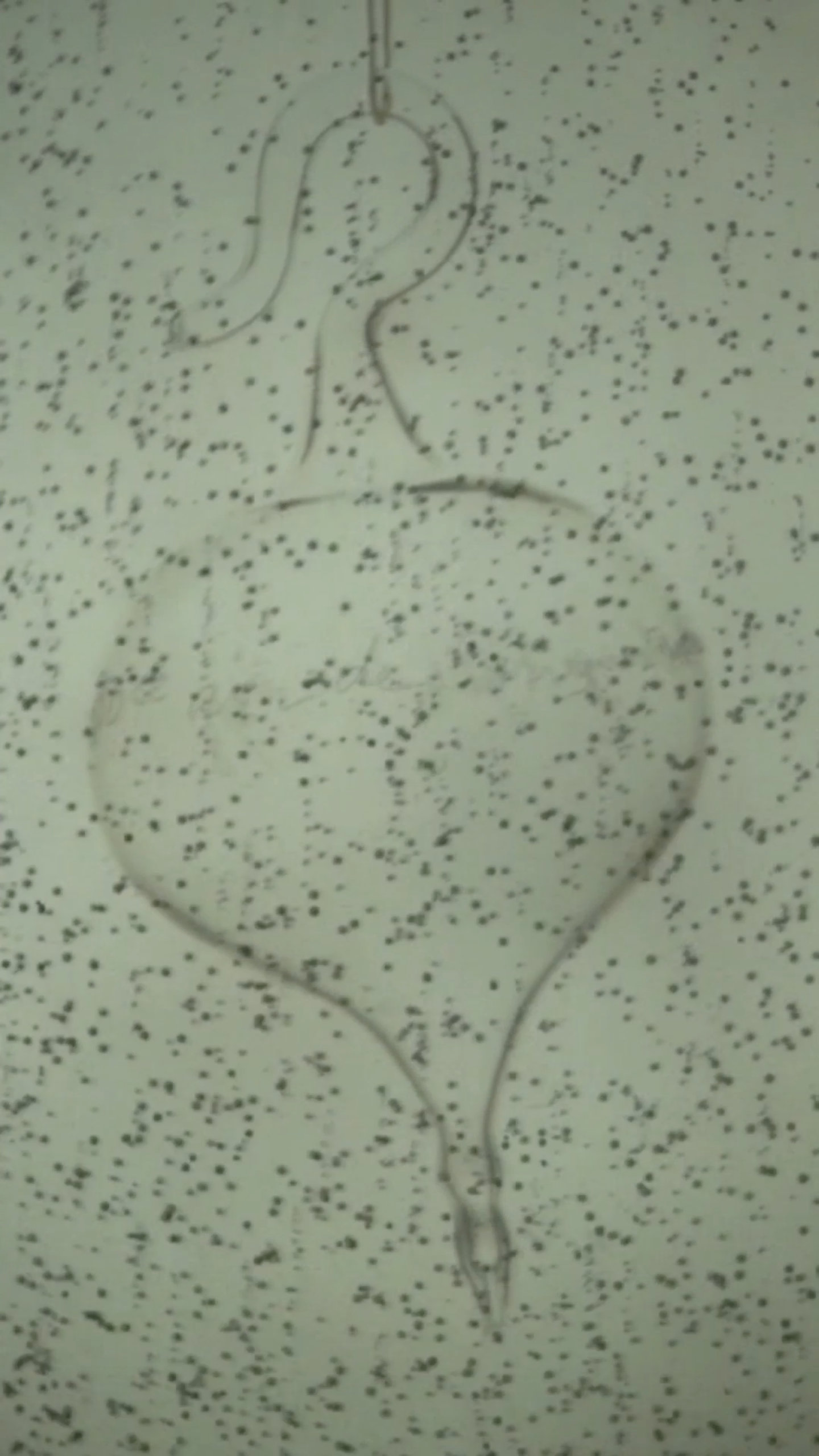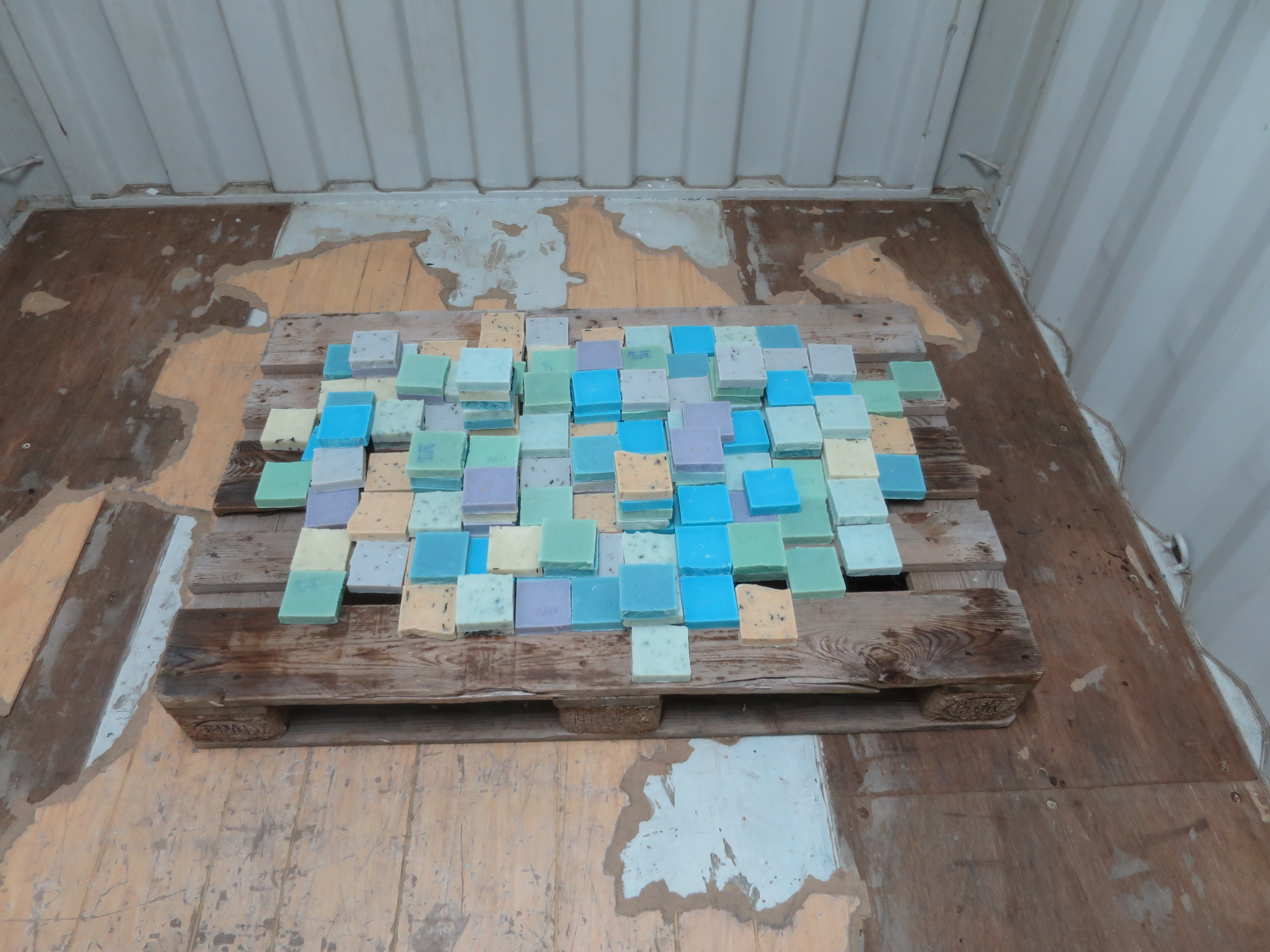In addition to the curatorial exhibition statement presented earlier, below are views of the three positions presented in EPHEMERAL MATERIALITIES: Scent in Swiss Art, as well as further information about the works. The exhibit runs till Nov. 13 (it is ephemeral after all), and is open Wed. – Sat. 2:30 – 6:30 pm (or by appointment). Please join us for the finissage on the last day at 6pm!
In addition to the theme of ephemeral materialities common to all three positions, the works respond as well to the site-specific context of the shipping container as transient art venue. Claudia Vogel’s soap installation focuses on water as means of transport, employing a shipping pallet as part of its vocabulary, as well as playing formally off of the modularity of containers. The experiment by Habib Asal demonstrates the limits of deodorization that is part of daily practice in shipping containers, as well as the fallacy of olfactory neutrality in contemporary life. In Anna-Sabina Zürrer’s case, it is not only a reference to Duchamp’s shipping of Air de Paris to New York (one of the earliest olfactory artworks); it is also the polyvalent title Verduften. The title hardly translates to English. Literally meaning “to clear off” or “smelling away”, the figurative translation implies the idea of physical movement and erosion.
Anna-Sabina Zürrer, Verduften (Air de Paris), 2015.
Video, 9:07 min, Loop.
Anna-Sabina Zürrer is interested in reductive state changes through chemical or physical processes, and chooses mostly as a starting point for her work collections of cultural property. She refers to the ability to select and forget as necessary in order to get one’s bearings in the current flood of information. Similarly, a permanent scenting can lead to overstimulation, or leave us suddenly unable to perceive a fragrance. In “verduften (Air de Paris)” the focus is on the visualization of the crime and the absurdity of the need to preserve ephemeral material: a slide of Marcel Duchamp’s “Air de Paris” is dissolved with a chemical liquid and shown in an endless video loop. The implication of this is that scents can only propagate through the minds of audience.
Claudia Vogel, H2O-Soap, 2015
Soaps (150 pieces) on Euro pallet
Water scents (with perfumer, Andreas Wilhelm, Zurich)
120 x 80 cm
Soap is an ephemeral material: we need it, we use it, we wash it out. Eventually, the piece dissolves completely.
The installation of soaps in the container is reminiscent of the commercial transport of goods. Not only are the individual goods transported strung together and sealed, but the shipping containers are stacked as well in rows.
The ArtContainer has spent countless kilometers on the water, surrounded by the sea or by the water of the canals.
Water as a sensual element offers various incentives for artistic reflections. Water fascinates not only because of the ever different color and surface, but also because of the smell.
Although water per se is odorless, the seas, rivers, and lakes smell strongly and differently depending on geography and weather.
The scent of these former daily environments of the container are brought as water scents into the interior of the container.
Habib Asal, Clear the Air – An Experiment, 2015
Installation: 12 hand-blown storage jars, clear glass
Dimensions: 28cmx20cmÆ, 4.7L and 20cmx18cmÆ, 1L
Granules (mineral contents: silicon oxide, aluminum oxide, potassium, magnesium, calcium, sodium, water)
A previous work by Habib Asal, titled L’aria di Genova, presented different kinds of scents the artist perceived while on residency in Genova. However, in Zürich, where he lives, he could hardly perceive any odors. This lead him to the thought that this country is not only so-called “neutral” on a historical and political level, but also when it comes to olfactory perception. Thus, he decided to create a work which raises the question, how does neutrality smell?
The idea is based on the fact that shipping containers (and other transportation such as trucks) often take on the odors of fish, food, animals and many of the odors of previously shipped merchandise. Any odor in a transportation container can be neutralized by pulling these odors out of the container with a product that eliminates odors. In order to find out whether potential transportation scents could be brought to a neutral scent perception, this work undertakes an experiment to do so by adding a scent eliminator product (Earth Care’s Clear the Air Odor Eliminator) to 12 chosen odors kept in glass jars.
[blog_subscription_form title=”” title_following=”You are already subscribed” subscribe_text=”” subscribe_logged_in=”Click to subscribe to this site” subscribe_button=”Click me!” show_subscribers_total=true]


